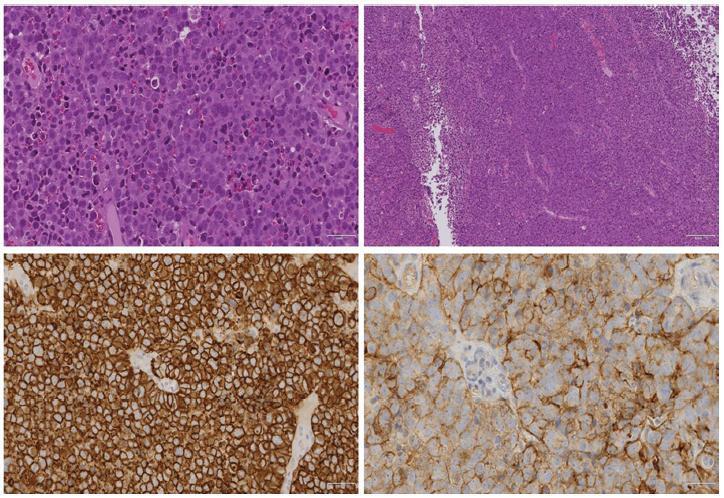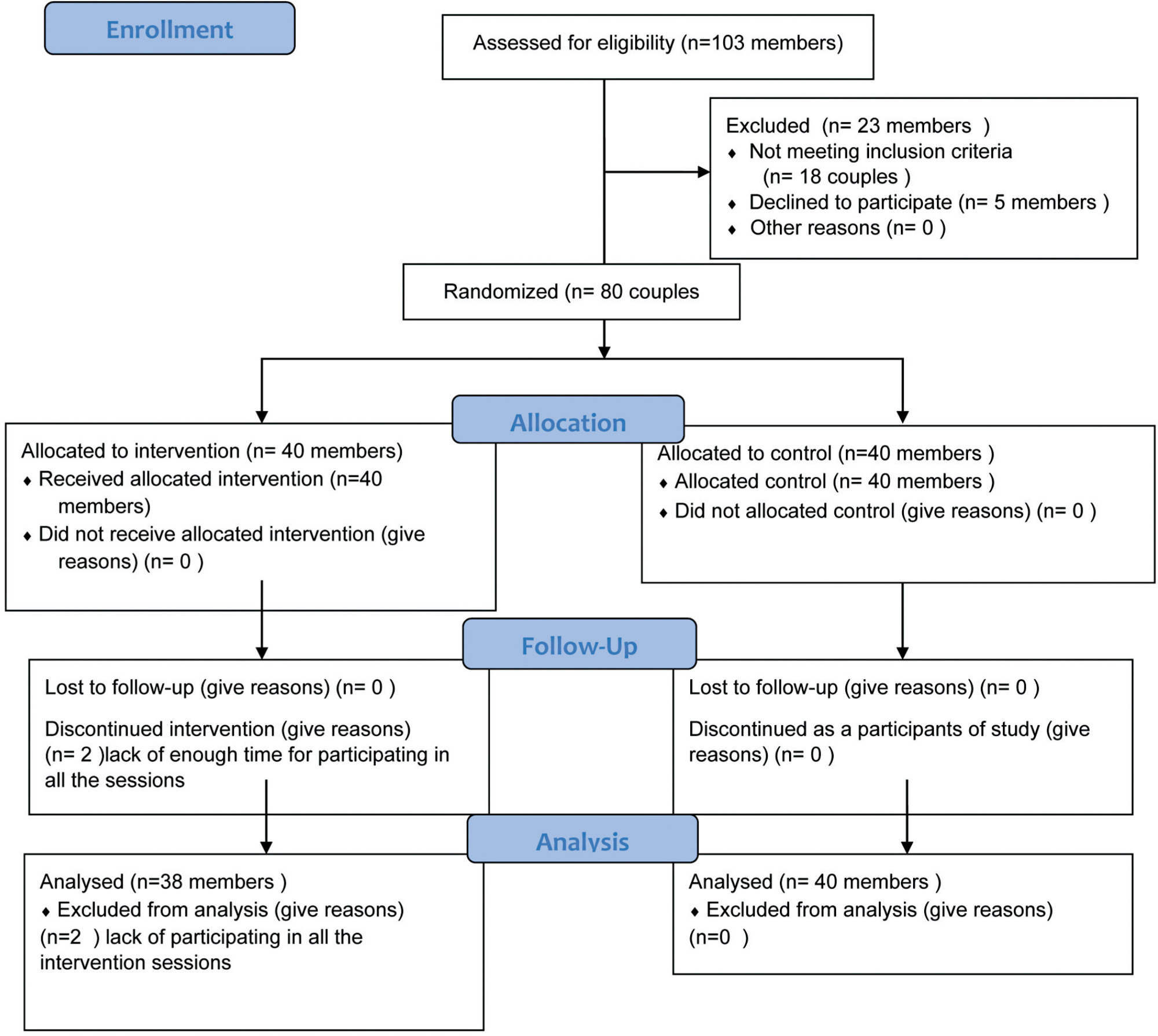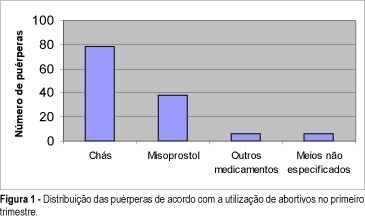Summary
Revista Brasileira de Ginecologia e Obstetrícia. 2017;39(9):516-520
The association between plasmacytomas and multiple myeloma (MM) is well-described, and in about one third of the cases of plasmacytoma the additional study will lead to the diagnosis of MM. The finding of plasmacytomas in the genital tract is extremely rare, with sparse cases described in the literature, and these cases pose a challenge regarding the optimal guidance and treatment. This paper describes a case of uterine extramedullary plasmacytoma in a 79-year-old woman with complaints of postmenopausal abnormal uterine bleeding. The complementary study led to the diagnosis of uterine plasmacytoma and, subsequently, of MM. Despite the unfavorable outcome of this case, we consider pertinent to report it because it constitutes a differential diagnosis to be taken into account in the approach of pelvic masses.

Summary
Revista Brasileira de Ginecologia e Obstetrícia. 2004;26(7):517-525
DOI 10.1590/S0100-72032004000700003
PURPOSE: to evaluate the experience of implementation of the Brazilian Prenatal and Birth Humanization Program (PHPN) in 2001 and 2002, through a population descriptive study. METHODS: the study was performed through documental analysis and using data generated by SISPRENATAL, comparatively evaluating the indicators concerning criteria for prenatal follow-up in different states, regions and period. RESULTS: until the end of 2002, 3983 municipalities joined the Program (72% adhesion) and, among them, 71% reported results, constituting a data base of 720,871 women. In 2002 only 28% of the pregnant women were already registered, 25% before 120 days of pregnancy. Nearly 22% of the women had six prenatal visits, 6% had the post-partum visit and the compulsory tests performed, only 4% had also the HIV test and were vaccinated against tetanus, and 12% had two examinations performed for syphilis. There were important regional variations, generally showing better indicators for the Southeast and South regions. CONCLUSIONS: although the indicators of quality of care showed an improvement from 2001 to 2002, the recorded low percentages attest the need for permanent evaluations and new interventions with the aim of improving the quality of this care, especially in the North and Northeast regions.
Summary
Revista Brasileira de Ginecologia e Obstetrícia. 2023;45(9):517-523
Gestational diabetes can cause maternal and neonatal morbidity. Psychological factors, especially stress, play a meaningful role in diabetes management. Therefore, the present study aimed to investigate the effect of Mindfulness-Based Stress Reduction counseling on blood sugar and perceived stress in women with gestational diabetes.
The present quasi-experimental interventional study was performed on 78 women with gestational diabetes. In the intervention group, a Mindfulness-Based Stress Reduction counseling program was conducted by the researcher in 8 sessions of 90 minutes twice a week. The Cohen stress questionnaire was filled in both groups. Also, fasting blood sugar and 2-hour blood sugar levels were measured in both groups. Statistical analysis was performed using the independent T-Test, the paired T-Test, the Mann-Whitney and Wilcoxon Tests using IBM SPSS Statistics for Windows version 20 version (IBM Corp., Armonk, NY, USA).
The mean age of pregnant women in the intervention group was 28.84 ± 6.20 years old and 29.03 ± 5.42 years old in the control group. There was a significant mean difference between the fasting blood sugar score (p = 0.02; - 6.01; and - 11.46) and the 2-hour fasting blood sugar score (p < 0.001;12.35; and - 5.3) and the perceived stress score (p < 0.001; 35.57; and - 49.19) existed between the intervention and control groups after the intervention.
The results of the present study showed that mindfulness-based stress reduction counseling is effective in reducing blood sugar levels and reducing perceived stress in women with gestational diabetes treated with diet.

Summary
Revista Brasileira de Ginecologia e Obstetrícia. 2001;23(8):517-521
DOI 10.1590/S0100-72032001000800006
Purpose: to verify the association of the use of abortifacient drugs during the first 3 months of gestation with the occurrence of congenital malformations in live births. Patients and Methods: population-based case-control study through selection of the first six live births on a day, over the period of a year, at a public maternity in Salvador, Bahia, with a total of 800 cases. Studies were performed through investigation of birth records in the search of congenital malformation data, observation of selected malformed newborns, followed by interview with the mothers for collection of anamnesis data, by application of a questionnaire. Later on data were statistically evaluated by Epi-Info 5.0 software. Results: puerperae came from a low socialeconomic class (74.8%), without any or almost any schooling (61.1%). The general percentage of birth defects was estimated at 4.7%. Out of 800 puerperae, 16% reported abortifacient drug intake during the first 3 months of gestation and 10.9% of them had malformed babies. This incidence was 3.6% in children whose mothers denied the intake of any abortifacient drugs. Agents most commonly taken in those unsuccessful abortive attempts were misoprostol (Cytotec) and herbs, specially "alumã" (Vermonia baiensis Tol) and "espinho cheiroso" (Kanthoxilum shifolium Lam), which, according to the literature, do not really have any abortive effect. Conclusion: the study revealed the extension of intentional miscarriage in a low income population and showed that the occurrence of birth defects could be related to gestational exposure to misoprostol and herbal medicine intake.

Summary
Revista Brasileira de Ginecologia e Obstetrícia. 1998;20(9):517-524
DOI 10.1590/S0100-72031998000900005
Purpose: to determine the behavior of doppler velocimetry during the course of risk pregnancies and to compare the perinatal results obtained for concepti with retarded intrauterine growth (RIUG) with those for concepti considered adequate for gestational age (AGA). Methods: a prospective study of the evolution of doppler ultrasound was made in 38 pregnant women with of idiopathic intrauterine growth retardation (IUGR) in previous pregnancy. A relationship was established between this antecedent and the new pregnancy. The pregnant women studied were divided into two groups in agreement with their neonates birthweight. Group 1 was associated with IUGR and group 2 with adequate birth weight. IUGR was confirmed in 23.7% of the cases. Umbilical and uterine artery doppler velocimetry was performed from 20 to 40 weeks of gestation. Middle cerebral artery doppler velocimetry was analyzed after 28 weeks of gestation, twice a month, being the last valued examination before birth. Results: the uterine and umbilical artery ratio at 24 and 28 weeks of gestation, respectively, correlated with the presence of IUGR. There was no difference between the two groups regarding the presence or absence of a small notch in the uterine artery wave form and middle cerebral artery doppler velocimetry ratio, at the last examination before birth. There was a relationship between neonatal stay in hospital for more than three days and the presence of IUGR. Conclusions: doppler ultrasound should be used in the follow-up of cases with a high risk of IUGR. It allows the detection of the fetuses at high risk of hypoxia and, by interrupting the pregnancy, fetal distress-related complications may be avoided.
Summary
Revista Brasileira de Ginecologia e Obstetrícia. 2008;30(10):518-523
DOI 10.1590/S0100-72032008001000007
Ectopic pregnancy in a cesarean scar is the rarest form of ectopic pregnancy and probably the most dangerous one because of the risk of uterine rupture and massive hemorrhage. This condition must be distinguished from cervical pregnancy and spontaneous abortion in progress, so that the appropriate treatment can be immediately offered. Since the advent of endovaginal ultrasonography, ectopic pregnancy in a cesarean scar can be diagnosed early in pregnancy if the sonographer is familiarized with the diagnostic criteria of this situation, especially in women with previous cesarean scar. Here we describe a case of ectopic pregnancy in a cesarean scar in which the diagnosis was considerably late, with presentation of spontaneous regression.

Summary
Revista Brasileira de Ginecologia e Obstetrícia. 2016;38(10):518-523
To translate into Portuguese, culturally adapt and validate the Uterine Fibroid Symptom - Quality of Life (UFS-QoL) questionnaire for Brazilian women with uterine leiomyoma.
Initially, the UFS-QoL questionnaire was translated into Brazilian Portuguese in accordance with international standards, with subsequent cultural, structural, conceptual and semantic adaptations, so that patients were able to properly answer the questionnaire. Fifty patients with uterine leiomyoma and 19 patients without the disease, confirmed by abdominal pelvic examination and/or transvaginal ultrasound, were selected at the outpatient clinics of the Department of Gynecology of the Universidade Federal de São Paulo (Unifesp). The UFS-QoL questionnaire was administered to all women twice on the same day, with two different interviewers, with an interval of 15 minutes between interviews. After 15 days, the questionnaire was readministered by the first interviewer. Reliability (internal consistency and test-retest), construct and discriminative validity were tested to ratify the questionnaire.
The reliability of the instrument was assessed by Cronbach’s α coefficient with an overall result of 0.97, indicating high reliability. The survey results showed a high correlation (p= 0.94; p 0.001).
The UFS-QoL questionnaire was successfully adapted to the Brazilian Portuguese language and Brazilian culture, showing reliability and validity.
Summary
Revista Brasileira de Ginecologia e Obstetrícia. 2012;34(11):518-523
DOI 10.1590/S0100-72032012001100007
PURPOSE: To determine the prevalence and risk factors associated with failure of voluntary screening for cervical cancer during the gestational period in Rio Grande, Rio Grande do Sul State, Southern Brazil. METHODS: Previously trained interviewers applied a standardized questionnaire in the maternity to all mothers from this municipality who had delivered from January 1st to December 31st 2010 to obtain information about the demographic characteristics of the pregnant women, family socioeconomic status, and prenatal care received. The χ² test was used to compare proportions and Poisson regression with robust adjustment of variance was used in the multivariate analysis. RESULTS: Among the 2,288 respondents, 33% were not submitted to the Pap smear during pregnancy. Two thirds of these women stated that they were not aware of the need to perform it, 18% were not screened out of fear or shame, and the rest for other reasons. After adjustment, the highest prevalence ratios (PR) for noncompliance with the Pap smear occurred among young women (PR=1.5; 95%CI 1.25 - 1.80), with lower educational level (PR=1.5; 95%CI 1.12 - 2.12), who were living without a partner (PR=1.4; 95%CI 1.24 - 1.62), smokers (PR=1.2; 95%CI 1.07 - 1.39), who did not plan the current pregnancy (PR=1.3; 95%CI 1,21 - 1.61), who had attended less than six medical visits during the prenatal period (PR=1.4; 95%CI 1.32 - 1.69) and among users of oral contraceptives (PR=1.2; 95%CI 1.04 - 1.38). CONCLUSIONS: The higher the risk for uterine cervical cancer, the less likely a pregnant woman is to undergo a Pap smear. This definitely contributed to the increased morbidity and mortality from this disease in this setting.